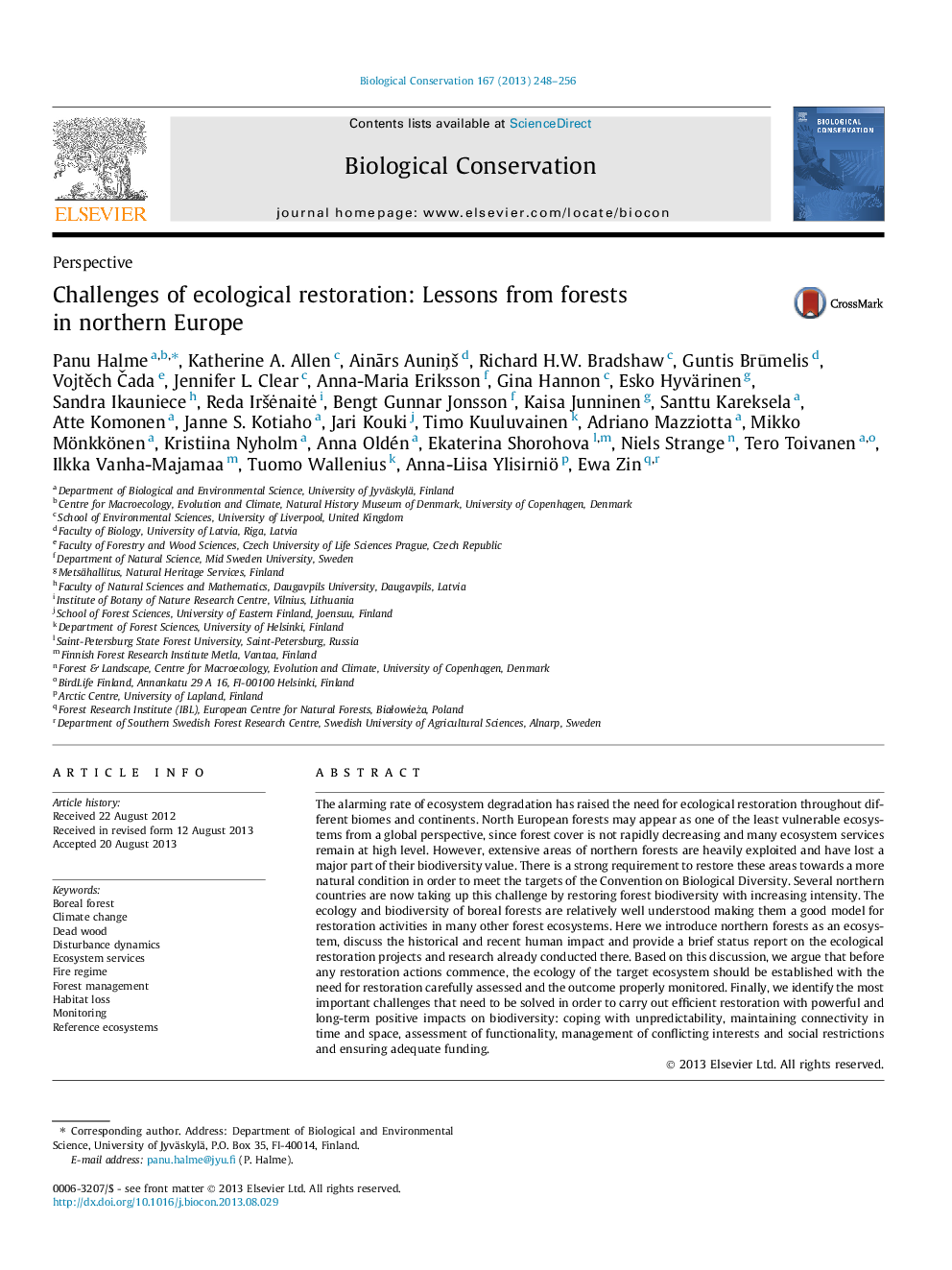| کد مقاله | کد نشریه | سال انتشار | مقاله انگلیسی | نسخه تمام متن |
|---|---|---|---|---|
| 6300575 | 1617934 | 2013 | 9 صفحه PDF | دانلود رایگان |
- Forest management has negatively affected biodiversity in northern European forests.
- Ecological restoration has been introduced to safeguard forest biodiversity.
- Feasible restoration actions should be conducted in well-known target ecosystems.
- Successful restoration must maintain connectivity and assess functionality.
- Restoration must cope with uncertainty and manage conflicts/restrictions.
The alarming rate of ecosystem degradation has raised the need for ecological restoration throughout different biomes and continents. North European forests may appear as one of the least vulnerable ecosystems from a global perspective, since forest cover is not rapidly decreasing and many ecosystem services remain at high level. However, extensive areas of northern forests are heavily exploited and have lost a major part of their biodiversity value. There is a strong requirement to restore these areas towards a more natural condition in order to meet the targets of the Convention on Biological Diversity. Several northern countries are now taking up this challenge by restoring forest biodiversity with increasing intensity. The ecology and biodiversity of boreal forests are relatively well understood making them a good model for restoration activities in many other forest ecosystems. Here we introduce northern forests as an ecosystem, discuss the historical and recent human impact and provide a brief status report on the ecological restoration projects and research already conducted there. Based on this discussion, we argue that before any restoration actions commence, the ecology of the target ecosystem should be established with the need for restoration carefully assessed and the outcome properly monitored. Finally, we identify the most important challenges that need to be solved in order to carry out efficient restoration with powerful and long-term positive impacts on biodiversity: coping with unpredictability, maintaining connectivity in time and space, assessment of functionality, management of conflicting interests and social restrictions and ensuring adequate funding.
Journal: Biological Conservation - Volume 167, November 2013, Pages 248-256
